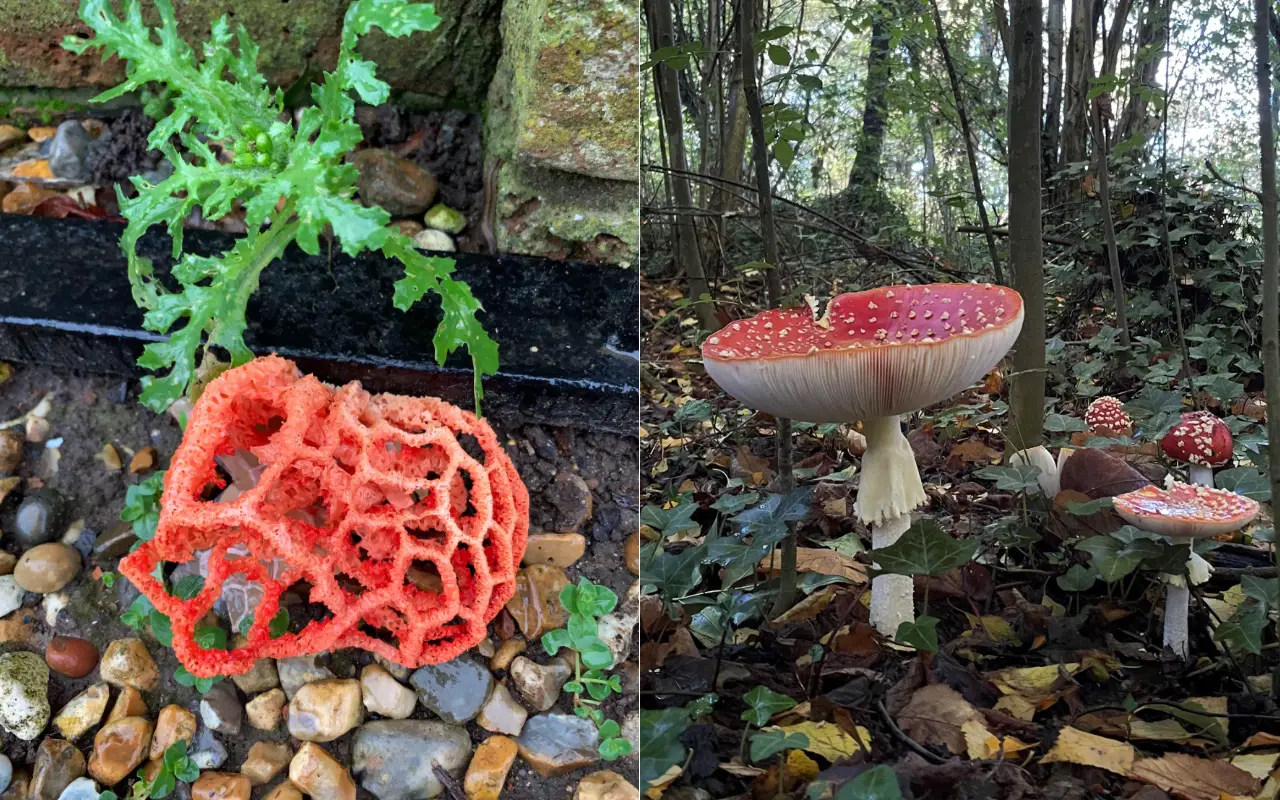Georgia Watts, who has recently completed a Zoology degree at Sussex University, shares this fascinating feature about the world of fungi – first published in the November Naturezones Feeder newsletter. Ed
Everyone knows the iconic Fly Agaric (Amanita muscaria); it’s what comes to mind when many hear the word ‘mushroom’ or ‘toadstool’. But mushrooms are only a tiny part of what makes fungi amazing, and super important.
Mushrooms are the fruiting body of some types of fungus meaning their role is to produce and disperse spores, which is how fungi reproduce. The rest of the fungi in our world is relatively unseen by us, but they happen to be the most important decomposers in our ecosystems.
The Mycelium network
Mycelium is the network of fungi ‘roots’ which live within the soil and collect nutrients for the fungus to feed on, since – unlike plants – fungi can’t make their own food. Some fungi feed off of dead and decaying matter such as fallen trees, some feed off living trees, and some have symbiotic relationships with plants.
These mutually beneficial ‘mycorrhizal’ relationships revolve around the fungus communicating with a tree – or other plant – via their roots and helping them uptake water and nutrients from the soil in exchange for nutrients that the fungus can’t make or collect itself.
The vital role of fungi
Fungi are vital for ecosystems as they play an important role in the decomposition of dead organic matter, soil health, and nutrient cycles, through their relationships with plants. But how can we ensure that these important organisms are able to continue to provide these ecosystem services when faced with the environmental issues of today?
Established woodlands, especially ancient woodland, need to be protected and managed in a way that preserves dead wood, leaf litter, and natural soil.
The rest of the forest would likely not exist without fungi
At this time of year, woodland – including that at Naturezones – is filled with many beautiful and interesting mushrooms, but fungi are there all year round, often hiding beneath our feet, and the rest of the forest would likely not exist without them.
To see more articles like this, sign up for the Feeder Newsletter by visiting the Naturezones Website.
Image: Cage Fungus (recently discovered in Blackwater) and Fly Agaric Mushrooms (at Naturezones) © Georgia Watts





